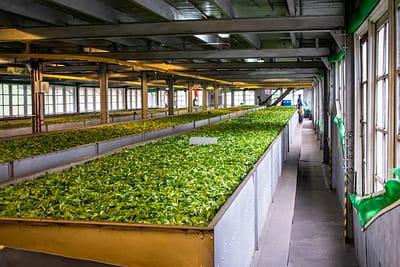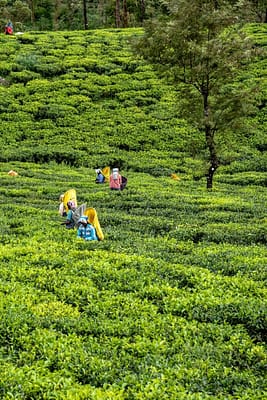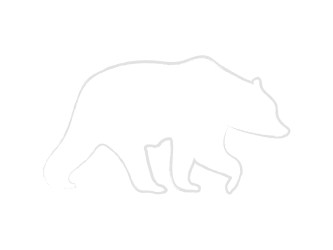After the hot and humid days on the west-coast, the cool and fresh air in the highlands of Sri Lanka was lovely. The drive from sea level on an altitude of around 1800m took us from forests of palm trees and rice paddy fields to huge tea plantations and waterfalls. On our way, we visited a tea factory where we learnt about the differences between black, green and white tea. The leaves come from the same plant but it depends which leaves you pluck as well as the time of drying and fermentation makes big differences in the taste. People living in and around the tea plantations are mostly farmers, growing vegetables that are exported across the island or are working in the tea factories. The tea pluckers, primarily women, earn a minimal wage.


We arrived in the highland town Nuwara Eliya where you can still see the strong influence the British colonists had on Sri Lanka. There is a huge golf course, a horse race track, numerous pubs and a “Grand Hotel”. The British used to come up here during summer when they couldn’t bear the heat and humidity of the lowland anymore. They felt at home here, not only because of the cooler temperatures but also because of the remarkable change in landscape, especially visible on the Horton plains. The vegetation changes from palm trees to Eucalyptus trees, then to pine trees, Rhododendron and finally into a thick mountain rainforest. Although we couldn’t spot many animals on the hike through the plains, we enjoyed this special area which the British used as their hunting ground and therefore protected it unconsciously against deforestation.



We then hopped on the train to Ella, very touristic, a bit shaky and rocky and overall veeery slow, but with beautiful views into the tea fields, the surrounding hills, villages and waterfalls. Ella did not offer a lot to us to be honest. Being quite a small town, it mostly caters to Western tourists who want to party.


So we left Ella fairly quickly again, but not after climbing the two prominent hills, Ella Rock and Little Arthurs Peak, both offering us an adorable view over Sri Lankas valleys and lakes. It’s quite unbelievable that 80% of Sri Lanka’s lakes are artificial, most of them built many hundred years ago by local kings. Using ingenious systems of waterways and reservoirs they managed to canalize the monsoon rains, so they could water the dry regions and avoid floods in the wet zones.




